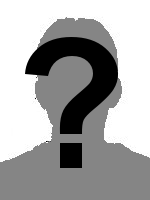Open Positions

We are continuously looking for talented people to join our group. We offer a cutting-edge research program on ultrafast spectroscopy of nanosystems as well as comprehensive training in several spectroscopic techniques. At the moment, we are especially interested to find candidates for the following projects, but are also open for proposal of the prospective co-workers.
BACHELOR AND MASTER THESES
Most of these topics are suitable as both a bachelor's and master's thesis.
A Lock-In Amplifier in an FPGA
For an experiment we need a multichannel photon counter, which counts up or down similar to a lock-in amplifier depending on the phase of a reference signal. Something like this is not available commercially and we therefore want to program it ourselves with an FPGA (field-programmable gate array) very close to the hardware. A first version is already running. The goal of this work is to further develop this device, to characterize it and to optimize it by comparing it with the ideal solution. As programming language we use Labview, which makes FPGA programming very easy
Construction of a micromanipulator for stacking gold flakes
We often make our plasmonic nanostructures by ion-beam etching from crystalline gold flakes, which are thin (100 nm) but relatively large (30 um). For many experiments it would be helpful to be able to place these flakes specifically before or after processing, either next to or on top of another interesting structure, or to be able to make layered structures of different materials. To do this, we need a micromanipulator that can be used in an optical microscope to pick up the flakes through a kind of adhesive tape and place them elsewhere. The aim of this work is to build and use such a manipulator following literature models.
High-speed interface for a line camera
For spectroscopic experiments, we use a line-scan camera that has only one pixel line, but can read it out very quickly, at up to 130 kHz. However, the resulting data rate is too high for a normal computer to handle. The idea is to write a small and fast programme that combines the data of the frame grabber. In the end, quasi sums over single lines are sufficient for our experiments. However, this has to be done very quickly. The goal of this work is to write such a programme in python and then pass the data on to the actual measuring programme in Labview.
PHD PROJECTS
Quantum optical circuits based on plasmonic waveguides
Semiconductor quantum dots serve as single photon sources. To build a photonic quantum computer from them, it is necessary to combine many single photon sources with a network of waveguides. Plasmonic waveguides promise efficient coupling and truly nanoscale footprint. We achieved already the first step of coupling to the waveguide (NanoLetters 2017), now we want to design and manufacture plasmonic circuits. Plasmonics and spectroscopy are done by us, the production and structuring of semiconductor samples together with cooperation partners.
Nonlinear near-field microscopy
Plasmonic nanostructures locally increase the electric field and are also themselves highly optically nonlinear, so that processes such as the generation of the second (SHG) or third harmonic (THG) are very efficient. The interaction of fundamental field distribution, plasmonic resonance, nonlinear polarization and finally nonlinear emission is quite complex. In special cases, this can be observed despite the limited resolution of a far-field microscope (NatComm 2016). Within the framework of a DFG project, however, we are looking for structures that enable well-controlled plasmonic near fields, for example, in order to excite molecules at specific positions on the nanometer scale. Therefore, we want to image non-linear plasmonic near fields in a near-field microscope consisting essentially of a scattering AFM tip as a probe. In an iterative process of simulation, production and measurement, a light source is to be developed that works below the diffraction limit.
For further information please contact Markus Lippitz.

